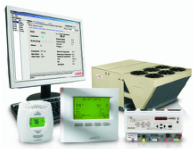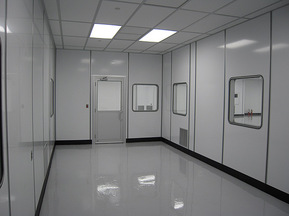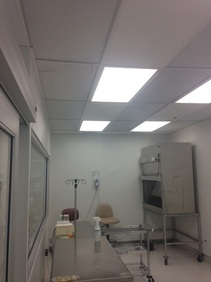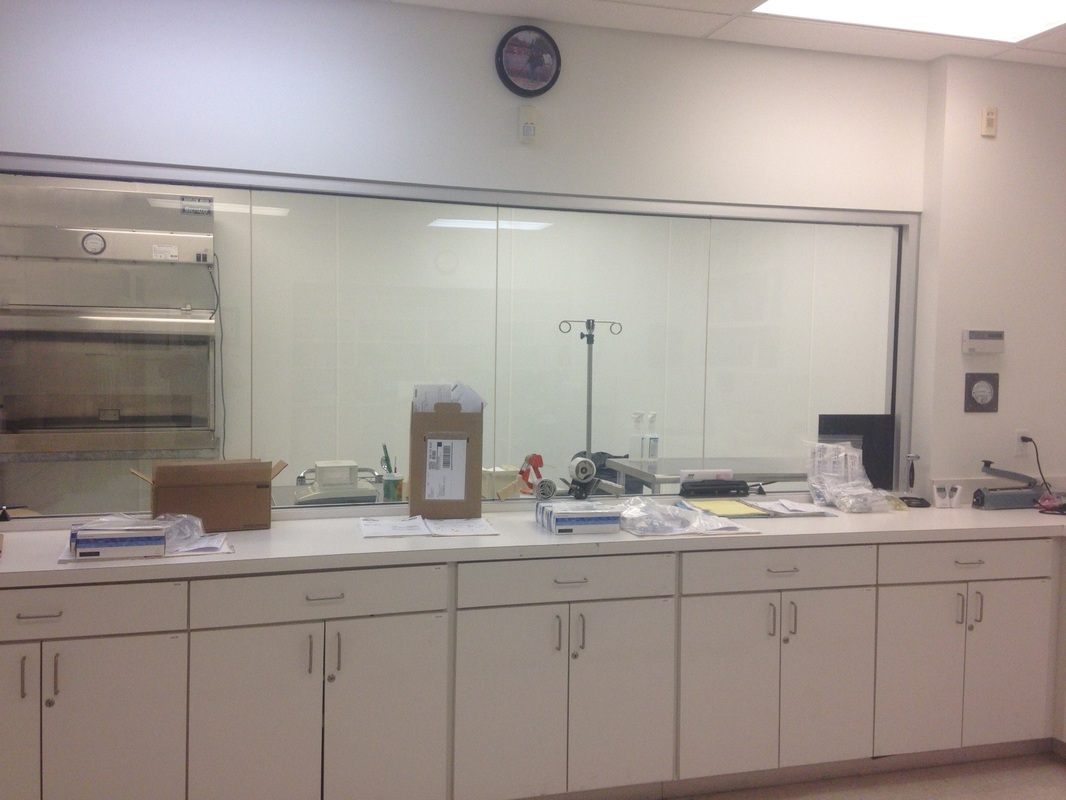Breathe Easy.
|

Troy Heating and Air practices Air Quality Control to effectively protect the public health and the environment in Oklahoma. We do this by implementing the State and Federal Clean Air Acts to reduce emissions and improve air quality in Oklahoma.
Useful air quality information and resources. |
Air Quality Services include:
-Humidification -Dehumidifiers -Ventilation -Filtration -Air Purification -HEPA and Pleated filters -Germicidal UV Air Treatment -Clean Room (category 100; 1,00; and 10,000) |

Call (405) 447-2255 TODAY
and see how we can help bring your home to its highest EFFICIENCY and healthiest air possible! |
Ventilation
Today’s newer homes are often tightly sealed for efficiency, but this can make the air stuffy. Also, allergens and contaminants can stay trapped inside. A new, proper working ventilation system offers a simple and effective solution, replacing stale indoor air with fresher outdoor air. Opening a window can make your air feel less stuffy, but this isn’t practical during the hotter and colder months of the year, plus it invites pollen and other allergens into your home. A ventilation system offers a better way to enjoy fresh air.
For more information on Lennox® humidifiers, visit lennox.com
For more information on Lennox® humidifiers, visit lennox.com
Dehumidifiers
Since a whole-home dehumidifier integrates with your central cooling system, you’ll avoid the noisy operation of portable units. You can also save yourself the hassle of constantly emptying water buckets. A dehumidifier is an electrical appliance which reduces and maintains the level of humidity in the air, usually for health or comfort reasons, or to eliminate musty odor and to prevent the growth of mildew by extracting water from the air. It can be used for household, commercial, or industrial applications
For more information on Lennox® humidifiers, visit lennox.com
For more information on Lennox® humidifiers, visit lennox.com
Humidifiers
By adding humidity to heated, dry air, the air feels warmer, helps reduce dry skin and static shock plus you can lower the thermostat and still be comfortable, while saving money. Humidifier therapy adds moisture to the air to prevent dryness that can cause irritation in many parts of the body. Humidifiers can be particularly effective for treating dryness of the skin, nose, throat, and lips. They can also ease some of the symptoms caused by the flu or common cold.
For more information on Lennox® humidifiers, visit lennox.com
For more information on Lennox® humidifiers, visit lennox.com
Purification
Air purification system are attached to the furnace or air handler, where contaminants are removed and destroyed before air is recirculated into the home. An air purifier or air cleaner is a device which removes contaminants from the air in a room. These devices are commonly marketed as being beneficial to allergy sufferers and asthmatics, and at reducing or eliminating second-hand tobacco smoke.
The commercially graded air purifiers are manufactured as either small stand-alone units or larger units that can be affixed to an air handler unit (AHU) or to an HVAC unit found in the medical, industrial, and commercial industries.
For more information, visit lennox.com.
The commercially graded air purifiers are manufactured as either small stand-alone units or larger units that can be affixed to an air handler unit (AHU) or to an HVAC unit found in the medical, industrial, and commercial industries.
For more information, visit lennox.com.
Germicidal UV Air Treatment
Troy Heating and Air provides you with a wide range of applications for UV lighting air treatment. Contact Us to see which treatment is best for your home!
Power with maximum-intensity ultraviolet light, these products help to dramatically reduce concentrations of microorganisms such as mildew, bacteria and mold.
For more information, visit lennox.com.
For more information, visit lennox.com.
Filtration
Attached to your furnace or air handler, these systems combat indoor pollution by capturing allergy-aggravating particles like pollen, mold and pet dander.
For more information, visit lennox.com.
For more information, visit lennox.com.
Clean Room
What is a Clean Room?
Typically used in manufacturing or scientific research, a cleanroom is a controlled environment that has a low level of pollutants such as dust, airborne microbes, aerosol particles, and chemical vapors. To be exact, a cleanroom has a controlled level of contamination that is specified by the number of particles per cubic meter at a specified particle size. The ambient air outside in a typical city environment contains 35,000,000 particles per cubic meter, 0.5 mm and larger in diameter, corresponding to an ISO 9 cleanroom which is at the lowest level of cleanroom standards.
Cleanrooms are used in practically every industry where small particles can adversely affect the manufacturing process. They vary in size and complexity, and are used extensively in industries such as semiconductor manufacturing, pharmaceuticals, biotech, medical device and life sciences, as well as critical process manufacturing common in aerospace, optics, military and Department of Energy.
A cleanroom is any given contained space where provisions are made to reduce particulate contamination and control other environmental parameters such as temperature, humidity and pressure. The key component is the High Efficiency Particulate Air (HEPA) filter that is used to trap particles that are 0.3 micron and larger in size. All of the air delivered to a cleanroom passes through HEPA filters, and in some cases where stringent cleanliness performance is necessary, Ultra Low Particulate Air (ULPA) filters are used.
Personnel selected to work in cleanrooms undergo extensive training in contamination control theory. They enter and exit the cleanroom through airlocks, air showers and/or gowning rooms, and they must wear special clothing designed to trap contaminants that are naturally generated by skin and the body.
For more information visit cleanairtechnology.com
Typically used in manufacturing or scientific research, a cleanroom is a controlled environment that has a low level of pollutants such as dust, airborne microbes, aerosol particles, and chemical vapors. To be exact, a cleanroom has a controlled level of contamination that is specified by the number of particles per cubic meter at a specified particle size. The ambient air outside in a typical city environment contains 35,000,000 particles per cubic meter, 0.5 mm and larger in diameter, corresponding to an ISO 9 cleanroom which is at the lowest level of cleanroom standards.
Cleanrooms are used in practically every industry where small particles can adversely affect the manufacturing process. They vary in size and complexity, and are used extensively in industries such as semiconductor manufacturing, pharmaceuticals, biotech, medical device and life sciences, as well as critical process manufacturing common in aerospace, optics, military and Department of Energy.
A cleanroom is any given contained space where provisions are made to reduce particulate contamination and control other environmental parameters such as temperature, humidity and pressure. The key component is the High Efficiency Particulate Air (HEPA) filter that is used to trap particles that are 0.3 micron and larger in size. All of the air delivered to a cleanroom passes through HEPA filters, and in some cases where stringent cleanliness performance is necessary, Ultra Low Particulate Air (ULPA) filters are used.
Personnel selected to work in cleanrooms undergo extensive training in contamination control theory. They enter and exit the cleanroom through airlocks, air showers and/or gowning rooms, and they must wear special clothing designed to trap contaminants that are naturally generated by skin and the body.
For more information visit cleanairtechnology.com
Classifications Of Clean Rooms
Clean rooms are classified by the cleanliness of their air. The method most easily understood and most universally applied is the one suggested in the earlier versions (A to D) of Federal Standard 209 of the USA. In this old standard the number of particles equal to and greater than 0.5 m m is measured in one cubic foot of air and this count used to classify the room. The most recent 209E version has also accepted a metric nomenclature. In the UK the British Standard 5295, published in 1989, is also used to classify clean rooms. This standard is about to be superseded by BS EN ISO 14644-1.
For more information on Clean Room Categories visit filterair.info
Contact Troy Heating and Air Today to see special classing applications!
Clean rooms are classified by the cleanliness of their air. The method most easily understood and most universally applied is the one suggested in the earlier versions (A to D) of Federal Standard 209 of the USA. In this old standard the number of particles equal to and greater than 0.5 m m is measured in one cubic foot of air and this count used to classify the room. The most recent 209E version has also accepted a metric nomenclature. In the UK the British Standard 5295, published in 1989, is also used to classify clean rooms. This standard is about to be superseded by BS EN ISO 14644-1.
For more information on Clean Room Categories visit filterair.info
Contact Troy Heating and Air Today to see special classing applications!




